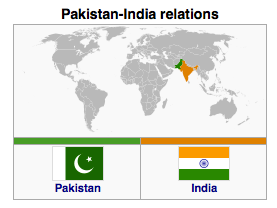Indo-Pak Nuclear CBMs: The Road To Nowhere – Analysis
By IPCS
By D Suba Chandran
Despite numerous initiatives at the research and track-II levels, India and Pakistan have not undertaken substantial NCBMs. A plethora of proposals and suggestions have been ignored, only indicating that the two countries are reluctant to pursue serious NCBMs. This leads to the question why are the two countries reluctant to pursue nuclear CBMs?
Does the non-negotiation of Nuclear-CBMs hurt India and Pakistan?

One of the primary theses of the ripeness theory advocated by William Zartman has been – that parties do not negotiate with each other, unless they reach a mutually hurting stalemate, beyond which both cannot proceed further, without hurting themselves in the process. Until that time is reached, parties are less likely to negotiate with each other.
Is the time ripe, in the Zartman sense, between India and Pakistan to negotiate nuclear CBMs? Does the non-negotiation of nuclear CBMs between India and Pakistan really hurt the two countries?
For India and Pakistan, nuclear CBMs are another strategy to achieve larger bilateral stability at the strategic level, rather than an objective itself. This could be based on the belief that the threat of a nuclear showdown is primarily an invention of the West, especially the US. Though Pakistan threatens to use the nuclear weapons and has convinced the rest of the world that its nuclear threshold is low, there is a larger understanding between the two countries that the threat is only a posture and not an actual position.
Despite few media reports and official accounts (mostly from Bill Clinton’s administration), there is no evidence that either India and Pakistan actually planned to use nuclear weapons during the Kargil conflict in 1999 and the military showdown during 2001-02, following the attack on Indian Parliament. Perhaps, India and Pakistan believe there is unlikely to be a nuclear exchange, hence do not pursue a nuclear CBM.
Disarming while Arming?
The second reason for the lack of NCBMs between the two countries perhaps could be – both countries are on an upward trajectory in arming themselves – with weapons, delivery mechanism and fissile materials. Hence, neither country would like to constrain itself with any CBM, that would affect the pace of armament.
While the West may argue, India and Pakistan should learn from the Cold War experience, there is neither an intention, nor any pressure on both countries to pursue a serious nuclear disarmament – either at the bilateral level or at the global level.
More importantly, the present positions of both countries on some of those critical issues relating to nuclear doctrine – No First Use, Credible Minimum Deterrence, and Threshold and Redlines are unclear and need further clarifications. Besides, there is less transparency on issues relating to doctrines, missiles, and deployment. The two countries are less likely to engage in a nuclear CBM when they are arming themselves and attempting to draft multiple doctrines.
Strong Scientific Bureaucracies, Weak Political Leaderships and Stretched Foreign Ministries
There is a wider belief, that the nuclear bureaucracies in both countries exert pressure over their respective political establishments to proceed further with the science trajectory. Four institutions play a crucial role – Prime Minister Office, Foreign Ministry, Defence Ministry and the technocrats in the making and unmaking of a nuclear CBM. From refining the fissile materials to building ballistic missiles and other delivery mechanisms, they exert pressure on the political leadership not to accept any measures, which would impinge on the scientific experiments. Though the scientific bureaucracies may not be war mongering, their passion for nuclear research, perhaps comes in the way of n-CBM between the two countries.
Unfortunately, the political leadership in both countries is weak to pursue any strong nuclear CBMs. Though, both countries during the last decade, undertook serious CBMs especially over J&K and along the LoC, there were no substantial movement on the nuclear CBMs. Perhaps, there was more pressure from within, to move ahead on the Kashmiri CBMs, whereas on the nuclear CBMs, there is more pressure from outside (read the US and the West). Lack of sufficient internal pressure within the two countries over their political leaderships could be another reason for the slow progress on nuclear CBMs.
More importantly, the foreign ministries in both countries are over stretched. The sections dealing with nuclear aspect within the foreign ministry are under pressure to devise larger national strategy towards global nuclear disarmament and the nuclear security summits. The FMCT debate, IAEA, NSG and other controversies (for example in Pakistan over AQ Khan network) has placed these sections within the foreign ministries of both countries on a fire fighting mode, than to devise a bilateral CBM based on an in depth analysis.
Lack of an Enabling Security Environment
The biggest obstacle for the NCBMs between India and Pakistan is the lack of a security environment, which will enable both countries to consider nuclear CBMs, to reduce the threats and address issues relating to safety and security. Instead, the n-CBM is projected as an enabling feature to reach a secure environment. This has become a sort of a chicken and egg debate. Finally, the Indo-US and Sino-Pak nuclear deals are likely to impact further on how the two countries see each other’s nuclear ambitions.
D Suba Chandran
Director, IPCS & Visiting Professor, Pakistan Studies Programme, Jamia Millia Islamia
email: [email protected]
